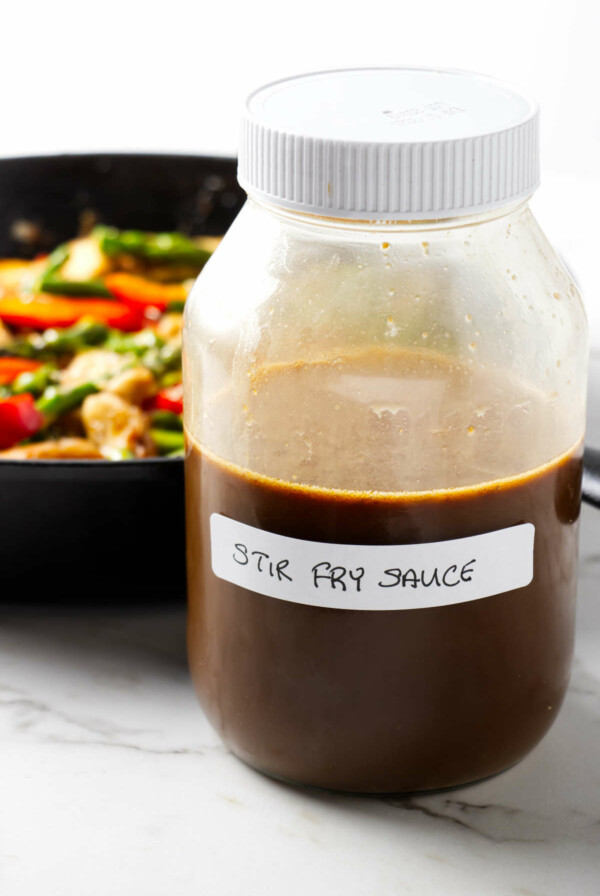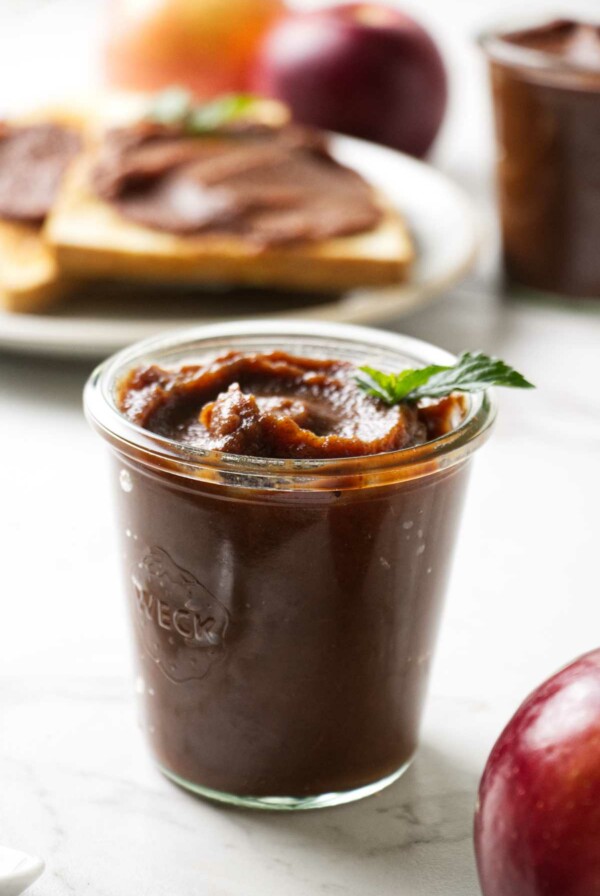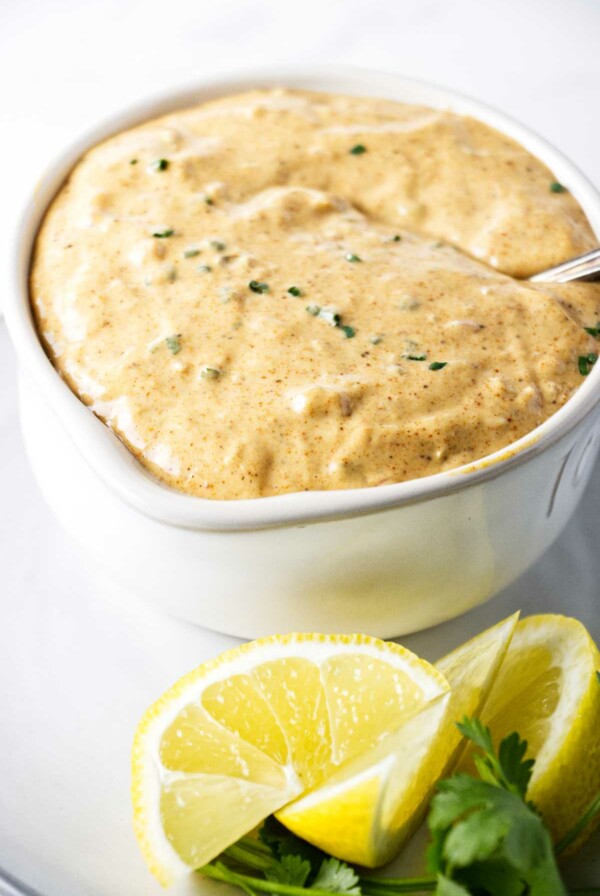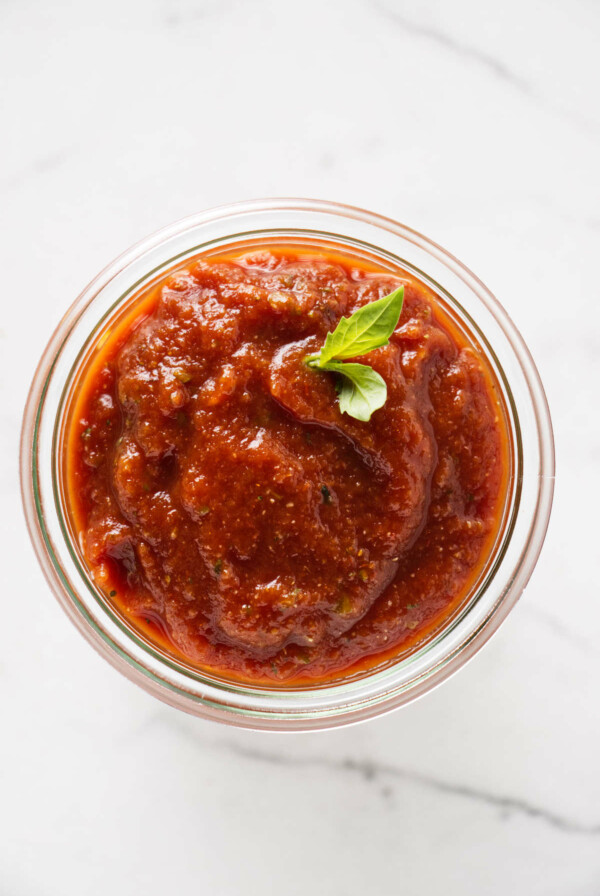This post may contain affiliate links. Please read our disclosure policy. As an Amazon Associate, I earn from qualifying purchases.
It’s simple to transform juicy, fresh tomatoes into a flavorful pizza sauce! This homemade pizza sauce recipe is delicious, easy and a wonderfully fresh addition to homemade pizza night. It’s a great way to turn a bounty of fresh garden tomatoes and herbs into a rich sauce that truly has the best flavor!
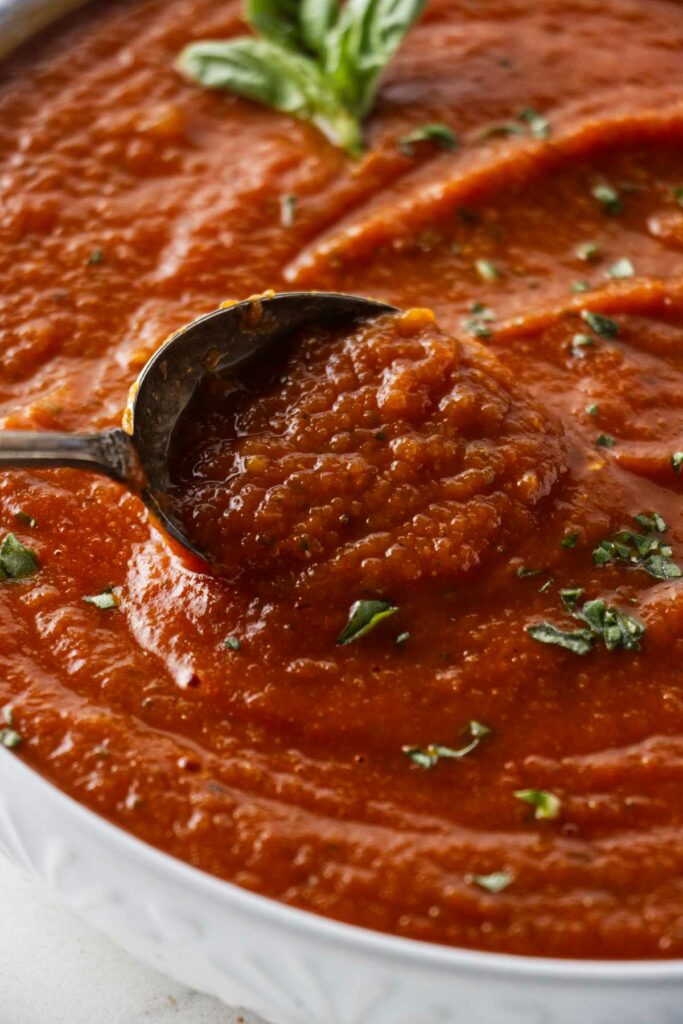
The very best pizza sauce recipe isn’t complex and doesn’t require a whole lot of ingredients.
In fact, there are several ways to go about making a delicious red sauce to top that homemade pizza crust and using fresh, ripe homegrown tomatoes is just one of them! Check out our post to see how to make dough for pizza. (We also have a recipe for pizza sauce from tomato paste!)
Similar to our San Marzano Tomato Sauce, this fresh tomato sauce is just as easy to prepare and comes together with just a few ingredients.
Make a big batch in advance to have on hand for the next time you’re craving a freshly-baked, cheesy homemade pizza and need a flavorful sauce that won’t disappoint!
Slather it onto your favorite homemade pizza dough and pile on your toppings of choice!
Why This Recipe Works
If you’re wondering how to make pizza sauce from fresh tomatoes, you might be surprised to discover just how easy the process is.
The best part about this recipe is that it requires little effort. A handful of ingredients- whole tomatoes, fresh or dried herbs, some seasonings and aromatics– combine to create a thick sauce that’s packed with flavor.
Feel free to use your favorite variety of tomatoes whether it’s campari or roma or any other kind you have sitting in your fridge or have plucked from your own tomato plants!
Here’s why this fresh tomato pizza sauce recipe works:
- Simple to prepare. This is an easy recipe that is simple to make using fresh tomatoes. A quick blanch and puree creates the base for an extra smooth sauce. A long simmer with aromatics and herbs add extra flavor.
- Healthier than store bought pizza sauce. Making your own pizza sauce is the best way to eliminate preservatives or questionable ingredients you might find in store-bought sauces. You know exactly what’s going into the sauce and don’t have to worry about any unwanted add-ins.
- A delicious sauce with an authentic taste. The best tomato flavor comes from the freshest tomatoes! Onion, garlic, herbs and a small amount of butter and sugar help enhance the flavor even more.
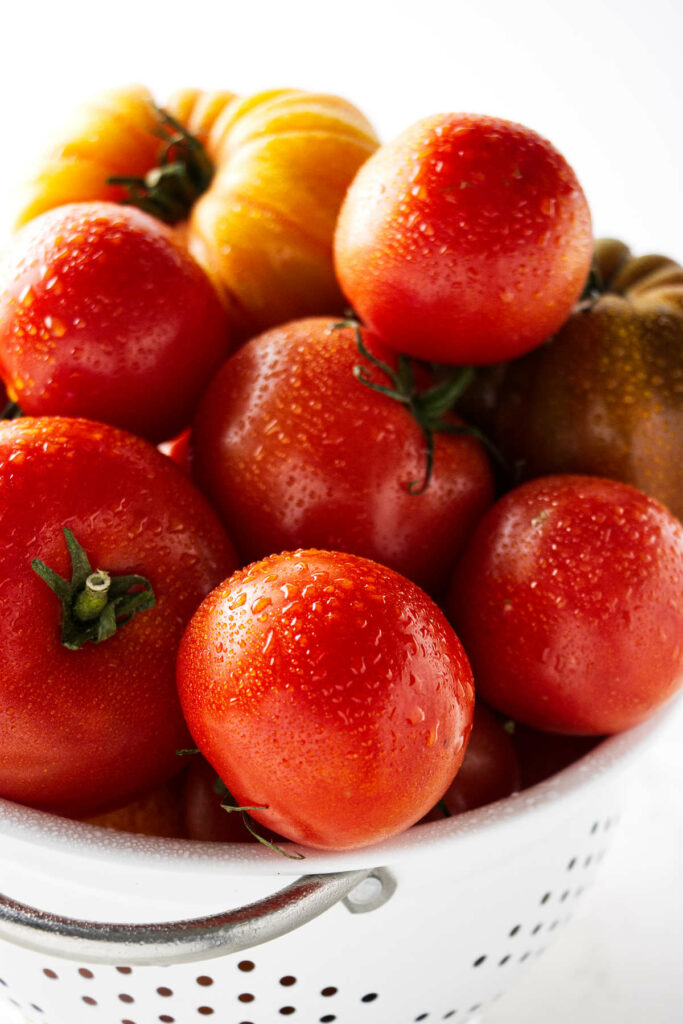
Ingredients Needed
To make pizza sauce using fresh tomatoes, you will need the following ingredients:
- Fresh tomatoes. About three pounds of any type of tomatoes will do.
- Olive oil and butter. For cooking the onion and garlic and adding flavor to the sauce.
- Onion and garlic. This adds a savory flavor to the sauce that enhances (and doesn’t overpower) the flavor.
- Fresh or dried herbs. We like to use fresh oregano and fresh basil but dried herbs will also work well.
- Sugar and red wine vinegar. Just a couple of teaspoons of each are all you need to balance the flavor of the sauce. Sugar helps cut through the natural acidity of the tomato.
- Salt and black pepper. For seasoning the sauce.
How to Make Pizza Sauce from Fresh Tomatoes
Here’s a quick look at the easy process. Be sure to scroll to the bottom of the page to view the entire recipe and ingredient amounts in the printable recipe card.
Peeling the tomato skins is the first step but it’s entirely optional. The best way to do this is by blanching them for about 30 seconds until the skins lift, making them easier to peel off. If you’d like to leave the skins on the tomatoes, you can.
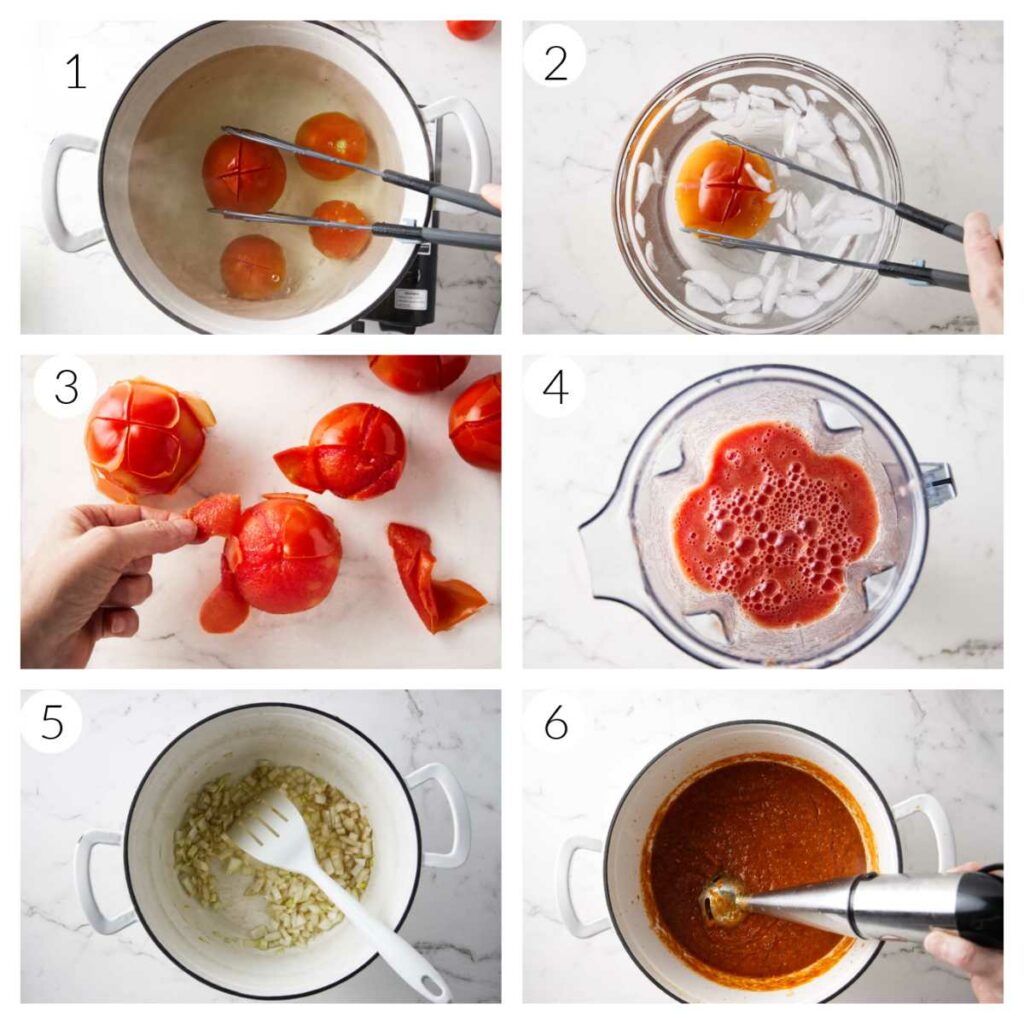
- Score the bottom of the tomatoes with an “x.” Drop them in boiling water for 30-45 seconds until the skins around the “x” start to curl up.
- Immediately transfer them to a bowl of ice water, then peel the skins off the tomatoes. Transfer them to a blender and puree until they’re smooth.
- In a large saucepan over medium-high heat, add the oil and butter. Sauté the onion for a few minutes to soften, then add the garlic and cook for 30 seconds. Add the tomato puree along with the rest of the ingredients.
- Bring the sauce to a boil, then let it simmer over low heat for 45 to 90 minutes or until the sauce has reduced by almost half.
- Once it’s done cooking, you can use it immediately or let it cool and store it for later.
Use this zesty tomato spread to make the best dinners for pizza night. As for what seasoning to put on pizza, we have you covered there as well.
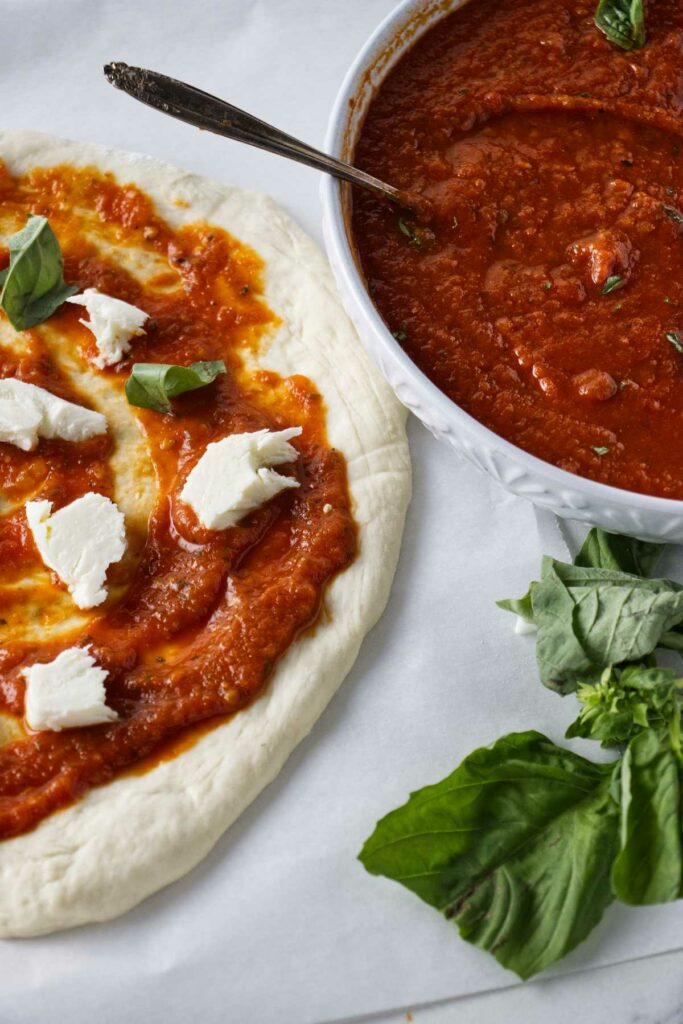
Tips for the Best Results
- This recipe requires three pounds of tomatoes, which is about 4 beefsteak tomatoes or about 10 medium-sized tomatoes (about the size of a baseball). You can use smaller tomato varieties like grape or cherry tomatoes if you wish, but it will take more time to remove all of the skins.
- You can also use an immersion blender or food processor to puree the sauce.
- Prepare the bowl of ice water ahead of time so it’s ready to go as soon as the tomatoes are done blanching. Immediately transfer them to the cold water to stop them from cooking any further.
- For a pizza sauce with a little bit of a kick, you can add red pepper flakes to taste.
Storing the Pizza Sauce
Once the sauce has cooled, you can transfer it to an airtight container or glass mason jar. Store it covered, in the refrigerator, for a week.
To freeze, transfer it to a freezer-safe container and store it in the freezer for up to three months. Let it defrost at room temperature. Use it on pizza or as a dip for our pizza dough breadsticks, or meatball sandwiches.
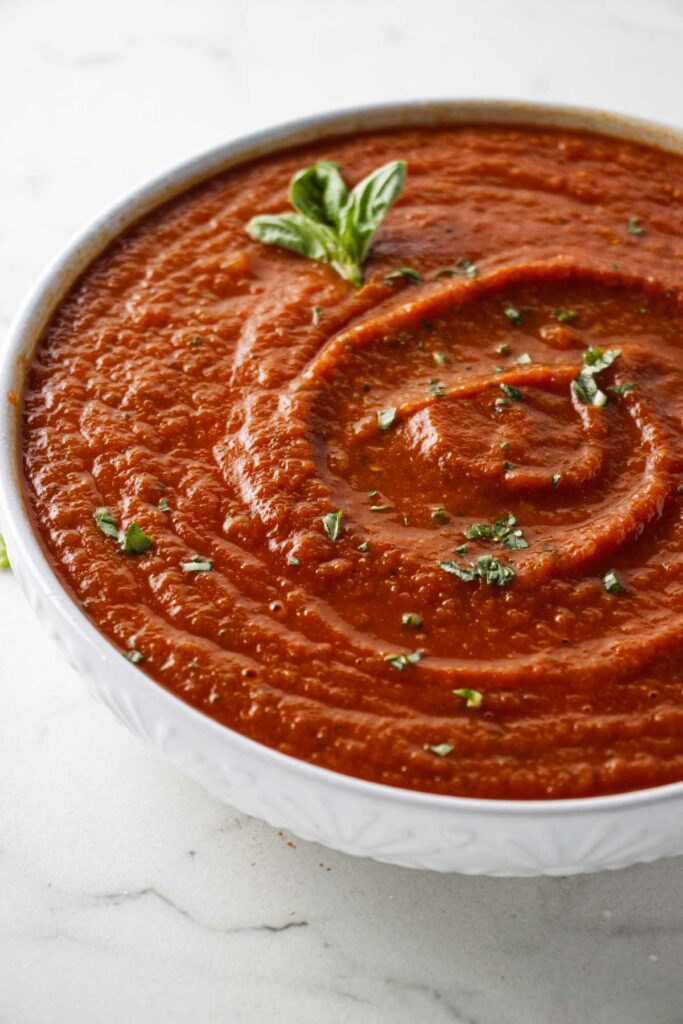
Pin this now to find it later!
Pin It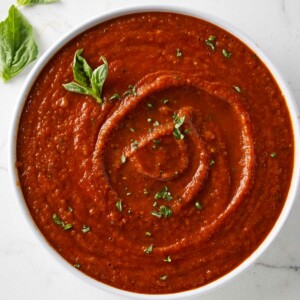
Pizza Sauce from Fresh Tomatoes
While peeling the tomatoes is optional, this extra step ensures a smoother, more refined texture. The skins can also give the sauce a slight bitter flavor after simmering for an extended time. You can easily double or triple this recipe if you have a lot of tomatoes.
If you make this recipe, please leave a star rating and comment.
Ingredients
- 3 pounds tomatoes
- 2 tablespoons olive oil
- 1 tablespoon butter
- 1 large onion
- 3 to 4 garlic cloves, minced
- 2 tablespoons fresh oregano , chopped or 1 tablespoon dried oregano
- 1 bunch fresh basil leaves, chopped or 1 tablespoon of dried basil
- 2 teaspoons granulated sugar
- 2 teaspoons red wine vinegar
- ½ teaspoon salt
- ½ teaspoon ground black pepper
Instructions
If you want to peel the tomato skins:
- Bring a large pot of water to a boil. Fill a large bowl with ice water and set it next to the stove.
- Score the bottom of the tomatoes with an "x". Drop the tomatoes in the boiling water for 30 to 45 seconds or until you see the edges on the 'x" start to curl up. Immediately transfer to the ice water to stop them from cooking.
- Peel the skins off the tomatoes by pushing your fingers or a paring knife under the skin.
To make the tomato sauce:
- Toss the tomatoes in a blender and blitz them into a smooth puree.
- Heat the oil and butter in a large saucepan over medium-high heat. Add the onion and saute for 3 to 5 minutes or until soft. Add the garlic, and cook for 30 seconds until fragrant.
- Add the tomato puree along with the rest of the ingredients. Bring to a boil, then reduce the heat to a gentle simmer. Simmer for 45 to 90 minutes or until the sauce is reduced by almost half.
Notes
Nutrition
Nutrition information is automatically calculated, so should only be used as an approximation.
 Like this recipe? Rate & comment below!
Like this recipe? Rate & comment below!
